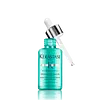What's inside
What's inside
 Key Ingredients
Key Ingredients

 Benefits
Benefits

 Concerns
Concerns

 Ingredients Side-by-side
Ingredients Side-by-side

Water
Skin ConditioningPolyquaternium-37
Paraffinum Liquidum
EmollientAmodimethicone
Polysorbate 20
EmulsifyingQuaternium-87
CleansingStearyl Alcohol
EmollientMenthoxypropanediol
MaskingBehentrimonium Chloride
PreservativeSafflower Glucoside
Maltodextrin
AbsorbentPropylene Glycol
HumectantCandelilla Cera
EmollientPPG-1 Trideceth-6
Skin ConditioningPropanediol
SolventChlorhexidine Digluconate
AntimicrobialIsopropyl Alcohol
SolventTrideceth-6
EmulsifyingAcrylates Copolymer
Sorbitan Oleate
EmulsifyingPolyquaternium-11
Rose Extract
Skin Conditioning2-Oleamido-1,3-Octadecanediol
Skin ConditioningCetrimonium Chloride
AntimicrobialCamellia Sinensis Leaf Extract
AntimicrobialXanthan Gum
EmulsifyingTocopherol
AntioxidantBHT
AntioxidantSodium Citrate
BufferingParfum
MaskingWater, Polyquaternium-37, Paraffinum Liquidum, Amodimethicone, Polysorbate 20, Quaternium-87, Stearyl Alcohol, Menthoxypropanediol, Behentrimonium Chloride, Safflower Glucoside, Maltodextrin, Propylene Glycol, Candelilla Cera, PPG-1 Trideceth-6, Propanediol, Chlorhexidine Digluconate, Isopropyl Alcohol, Trideceth-6, Acrylates Copolymer, Sorbitan Oleate, Polyquaternium-11, Rose Extract, 2-Oleamido-1,3-Octadecanediol, Cetrimonium Chloride, Camellia Sinensis Leaf Extract, Xanthan Gum, Tocopherol, BHT, Sodium Citrate, Parfum
Water
Skin ConditioningPolysorbate 20
EmulsifyingButylene Glycol
HumectantGlycerin
HumectantPolyquaternium-7
Rhodiola Rosea Extract
EmollientSodium Hyaluronate
HumectantTocopheryl Acetate
AntioxidantAcetyl Tetrapeptide-3
Skin ProtectingTocopherol
AntioxidantRosa Centifolia Flower Extract
AstringentDextran
Trifolium Pratense Flower Extract
AstringentAcanthopanax Senticosus Root Extract
Skin ConditioningRhaponticum Carthamoides Root Extract
Skin ConditioningInonotus Obliquus Extract
Skin ConditioningSelaginella Lepidophylla Extract
EmollientEthylhexylglycerin
Skin ConditioningDisodium EDTA
Sodium Hydroxide
BufferingAcrylates/C10-30 Alkyl Acrylate Crosspolymer
Emulsion StabilisingCitric Acid
BufferingSodium Benzoate
MaskingPhenoxyethanol
PreservativeParfum
MaskingEugenol
PerfumingLimonene
PerfumingLinalool
PerfumingWater, Polysorbate 20, Butylene Glycol, Glycerin, Polyquaternium-7, Rhodiola Rosea Extract, Sodium Hyaluronate, Tocopheryl Acetate, Acetyl Tetrapeptide-3, Tocopherol, Rosa Centifolia Flower Extract, Dextran, Trifolium Pratense Flower Extract, Acanthopanax Senticosus Root Extract, Rhaponticum Carthamoides Root Extract, Inonotus Obliquus Extract, Selaginella Lepidophylla Extract, Ethylhexylglycerin, Disodium EDTA, Sodium Hydroxide, Acrylates/C10-30 Alkyl Acrylate Crosspolymer, Citric Acid, Sodium Benzoate, Phenoxyethanol, Parfum, Eugenol, Limonene, Linalool
Alternatives
Ingredients Explained
These ingredients are found in both products.
Ingredients higher up in an ingredient list are typically present in a larger amount.
Parfum is a catch-all term for an ingredient or more that is used to give a scent to products.
Also called "fragrance", this ingredient can be a blend of hundreds of chemicals or plant oils. This means every product with "fragrance" or "parfum" in the ingredients list is a different mixture.
For instance, Habanolide is a proprietary trade name for a specific aroma chemical. When used as a fragrance ingredient in cosmetics, most aroma chemicals fall under the broad labeling category of “FRAGRANCE” or “PARFUM” according to EU and US regulations.
The term 'parfum' or 'fragrance' is not regulated in many countries. In many cases, it is up to the brand to define this term.
For instance, many brands choose to label themselves as "fragrance-free" because they are not using synthetic fragrances. However, their products may still contain ingredients such as essential oils that are considered a fragrance by INCI standards.
One example is Calendula flower extract. Calendula is an essential oil that still imparts a scent or 'fragrance'.
Depending on the blend, the ingredients in the mixture can cause allergies and sensitivities on the skin. Some ingredients that are known EU allergens include linalool and citronellol.
Parfum can also be used to mask or cover an unpleasant scent.
The bottom line is: not all fragrances/parfum/ingredients are created equally. If you are worried about fragrances, we recommend taking a closer look at an ingredient. And of course, we always recommend speaking with a professional.
Learn more about ParfumPolysorbate 20 is made by combining ethoxylation of sorbitan, ethylene oxide, and lauric acid. It is a mild cleansing agent, surfactant, and emulsifier.
As a surfactant, it helps collect dirt and oils for washing. Emulsifiers prevent oils and water from separating.
Polysorbate 20 also adds scent to a product. Since it is made using sorbitol, it has a sweet scent. Sorbitol can also be found in fruits such as apples and peaches.
The lauric acid used to create Polysorbate 20 is often derived from coconuts.
Polysorbate 20 may not be fungal acne safe.
Learn more about Polysorbate 20Tocopherol (also known as Vitamin E) is a common antioxidant used to help protect the skin from free-radicals and strengthen the skin barrier. It's also fat soluble - this means our skin is great at absorbing it.
Vitamin E also helps keep your natural skin lipids healthy. Your lipid skin barrier naturally consists of lipids, ceramides, and fatty acids. Vitamin E offers extra protection for your skin’s lipid barrier, keeping your skin healthy and nourished.
Another benefit is a bit of UV protection. Vitamin E helps reduce the damage caused by UVB rays. (It should not replace your sunscreen). Combining it with Vitamin C can decrease sunburned cells and hyperpigmentation after UV exposure.
You might have noticed Vitamin E + C often paired together. This is because it is great at stabilizing Vitamin C. Using the two together helps increase the effectiveness of both ingredients.
There are often claims that Vitamin E can reduce/prevent scarring, but these claims haven't been confirmed by scientific research.
Learn more about TocopherolWater. It's the most common cosmetic ingredient of all. You'll usually see it at the top of ingredient lists, meaning that it makes up the largest part of the product.
So why is it so popular? Water most often acts as a solvent - this means that it helps dissolve other ingredients into the formulation.
You'll also recognize water as that liquid we all need to stay alive. If you see this, drink a glass of water. Stay hydrated!
Learn more about Water